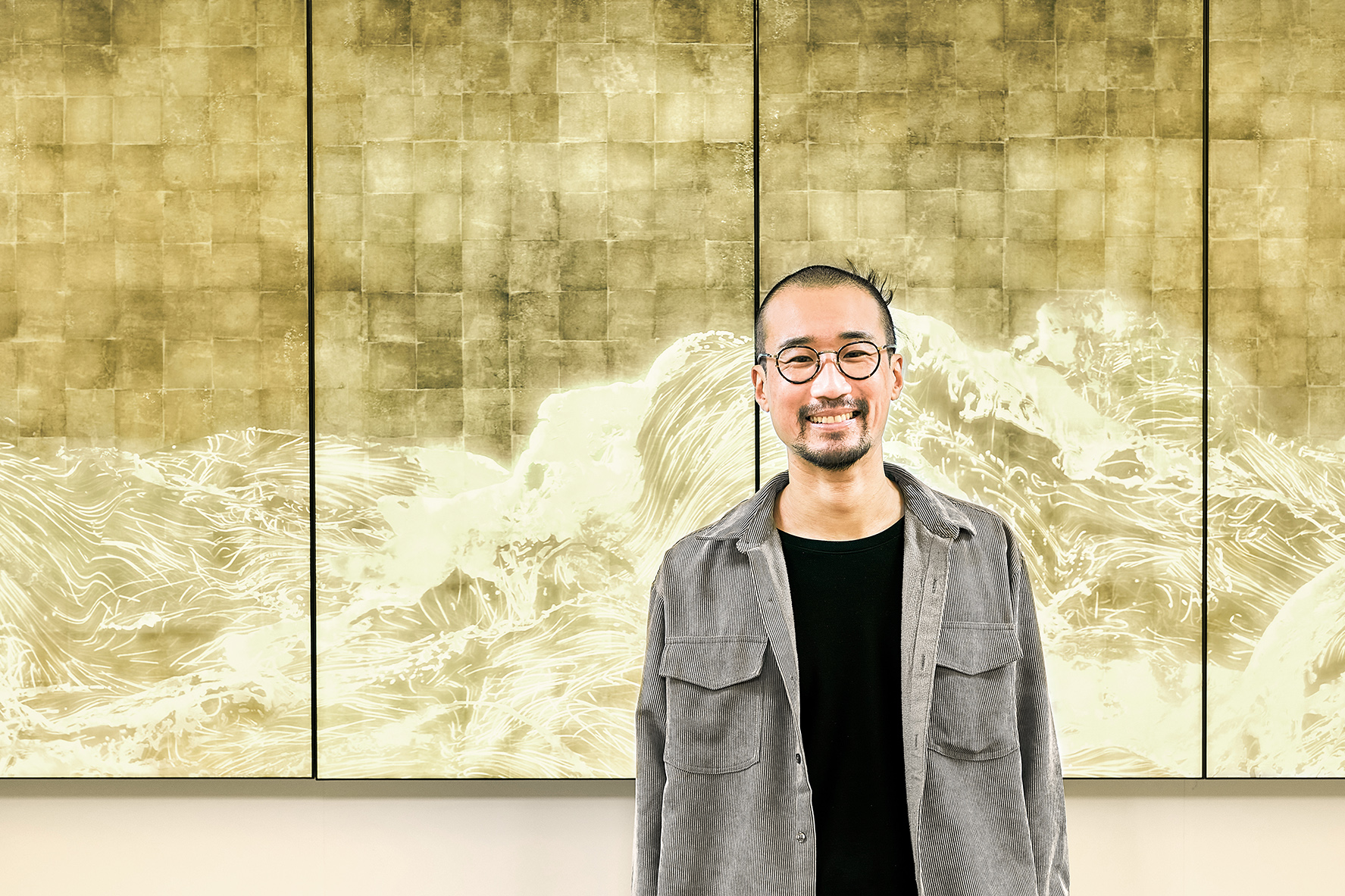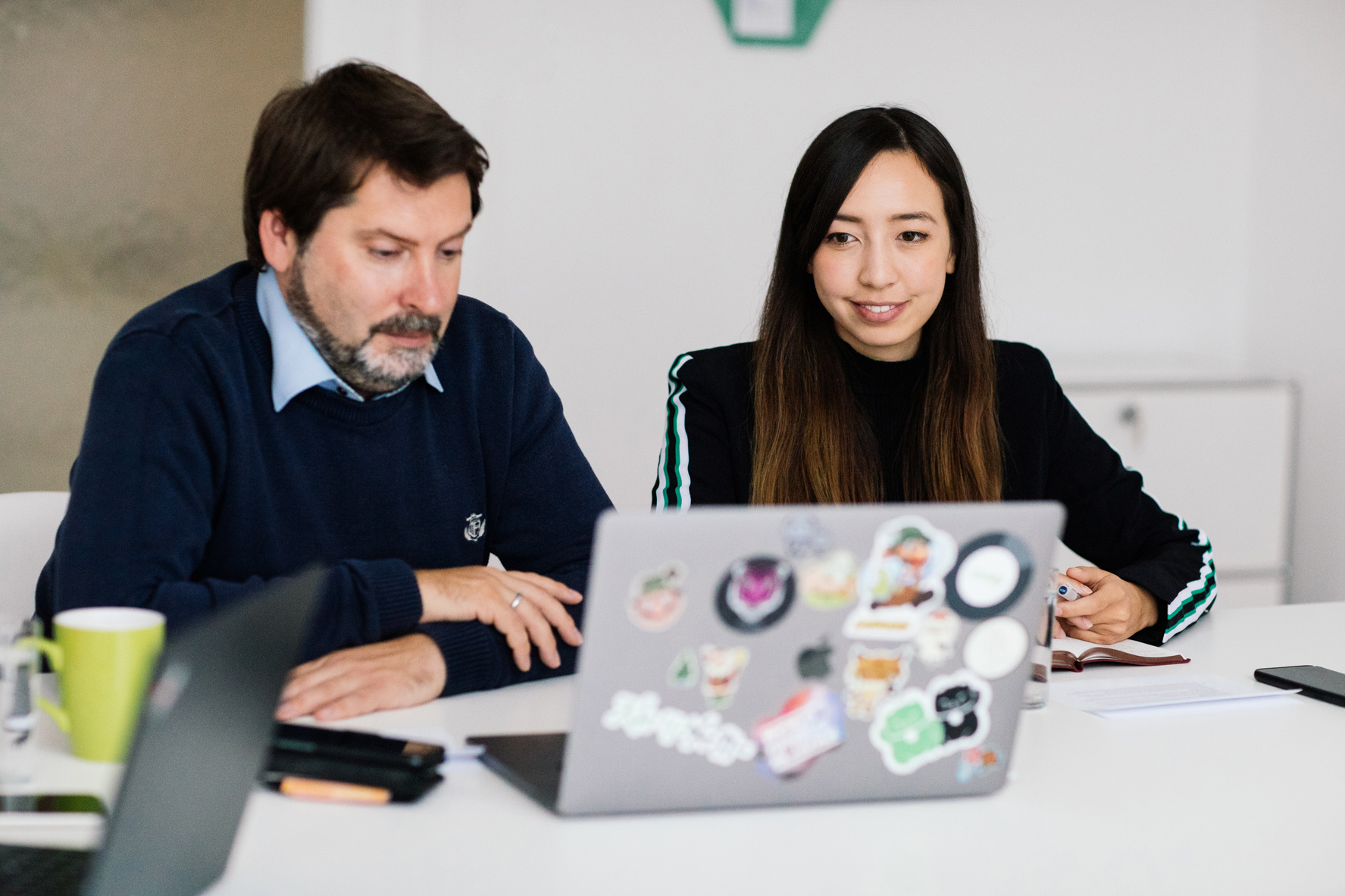With their digital works and an unconventional understanding of art, the Japanese artist collective teamLab has been stirring up the art scene in recent years far beyond the borders of their home country. Now teamLab art is coming to Germany – in the form of the Digital Art Museum, which is scheduled to open in Hamburg in 2024. We spoke to Takashi Kudo, one of the founding members of the collective, about art, the body and collaboration across borders.

J-BIG: For all the readers that still do not know who teamLab is: How did this collective progress, from your founding in 2001 to the “teamLab Borderless” exhibition in Tokyo in 2018?
Takashi Kudo: There’s a long and a short version of this story. The long one would probably take us 24 hours, so I’ll try to keep it brief. We started teamLab in 2001. There were five of us who were friends from our university years, although not all of us went to the same university. Some of us had known each other since childhood. All five founders come from different academic fields: Physics, robotics, engineering, programming, and space technology. So all of us had a science background, but we also had a passion for art, digital technologies and the internet.
Then and now, we conceived of teamLab as a two-pronged approach: On the one hand, we are an art collective, and on the other, we act as a kind of system integrator or application provider, for example for company websites or other output channels. Today, we have hundreds of people working for the company and are represented by Pace Gallery, but in the beginning, it was very difficult to be taken seriously as an art collective. Almost nobody was interested in what we were doing in the art space, and we just did not think that this side of business would ever become profitable. So we used our work as system integrators to finance our artistic vision. Even now that teamLab has become much bigger, we feel like we need both: digital technologies and also art. The need for art is something that cannot be explained, but that is felt by many people around the world. It knows no borders, and that is also the idea at the heart of our biggest exhibition to date, “teamLab Borderless” in Tokyo. We basically built our own museum in a huge space, but we still at that point did not know if we could ever monetize it. We just wanted to create.
There was a lot of trial and error before we got to where we are now, and also a lot of arguments. But little by little, we started to see our artwork becoming more successful. I remember one of the first international exhibitions “teamLab: Living Digital Space and Future Parks” we did in Palo Alto, close to San Francisco, in 2016, followed by our first exhibition at the Pace Gallery. It was a strange experience to see that we actually sold tickets to these immersive installations. Next, we did an exhibition called “teamLab: Transcending Boundaries” in London. It was a two-month exhibition, and it sold out within two or three days. That’s when we started to feel like maybe we could make this something bigger. After another temporary exhibition “teamLab : Au-delà des limites” in Paris, we set up our permanent space in Tokyo: The “teamLab Borderless” exhibition.
The need for art is something that cannot be explained, but that is felt by many people around the world.”
J-BIG: “teamLab Borderless” and other teamLab installations are very different from other kinds of exhibitions or museums. How would you describe your kind of artwork to someone who has never seen it?
Takashi Kudo: It is really difficult to explain, and some would probably question whether what we do should even be called art or not. There are several aspects that I think are essential. First, technology and the digital world are a core aspect of our art. There are no artworks hanging on the walls, there are no description plaques. The whole 10.000 square meter space is a three-dimensional canvas, and it is also constantly changing and moving. There is a lot of technology involved in making this happen, and we were really using our experience as system integrators to set up the necessary infrastructure. We also developed an app that allows you to get additional information on the artworks: It recognizes where you are in the exhibition and sends a pop-up about the artwork in front of or around you.
It’s really about the experience, and that, I think, is a second important aspect of what we do. Our museum is not only a place to view our artwork, but your physical presence in that space is an integral part of the experience. If you go to a forest, all the trees, bushes, and insects exist independently of each other, but they are all part of the same space and affect each other in a million different ways. The same is true for ideas and concepts: If I encounter a new idea, it might influence or change the one I already had in my mind. Not completely replace it but shape it into something new. There are many discussions about what art really is. To me, if our work has changed someone’s way of thinking, or feeling, or the way they view beauty, that’s art. I’m not sure yet if our output achieves that for people, but I hope so.
The third aspect of that is the importance of the physical space and the body. We think about how we can use digital technology to interact with the physical body and in a way expand the physical world we are operating in. We recognize the world around us with our bodies, not just our eyes or ears. This relationship between the human body and the world has been our main interest from the start, and we have explored it in various ways over the years.

“Information is just information, nothing more. Understanding something is a completely different thing, and the moment we think we understand more than we do, it will not truly help us break down borders.”
J-BIG: What role do you think technology and the digital age can play in breaking down borders?
Takashi Kudo: It’s a two-edged sword. On the one hand, it is much easier to get access to information from around the world. When I was a teenager, I was really into German techno and Jungle sounds coming out of London. But to listen to that music, I had to get in touch with people living in these places and ask them to do tape recordings on the radio and send them to Japan. Even the news was hard to get by when you don’t speak the language. The internet has made that much easier, but there is a real danger in thinking that just having that information means that we understand. Information is just information, nothing more. Understanding something is a completely different thing, and the moment we think we understand more than we do, it will not truly help us break down borders. I can read all about German culture and history, but it wasn’t until I travelled to Germany – that is to say, until I experienced it first-hand with my body – that I truly understood Germans and their culture in a meaningful way.


The reason I think our artwork is truly borderless is that it is not about understanding at all, it is about that physical and emotional experience. That is much more universal: We all have a body, and many of us are moved by the same sort of emotions. One reason we don’t put up information plaques in our exhibition is that there really is no right or wrong way to experience our art. It is at the same time a very personal and a shared adventure. We try to use digital tools and digital technologies to expand the physical world and bring people inside the realm of our imagination and creativity, breaking down the boundaries between the artist and the spectator in a way.
But “teamLab Borderless” also has a couple of other meanings in this context. On the one hand, there are no boundaries between the artworks themselves, they are constantly moving and even influence each other. On the other, the boundary between the artwork and the visitor also begins to dissolve. They are part of the installation and can physically interact with it. If you touch a flower blooming next to you, it will react to that touch, just like a real flower would. We now have a second “teamLab Borderless” exhibition in Shanghai that is in many ways an extension of the one in Tokyo. For example, there is an artwork there titled “Sketch Ocean” where a shoal of fish enters from a similar installation in Tokyo or San Francisco. All three artworks are connected and the fish swim freely from one to the other.

J-BIG: How did you find a way to finance and monetize these projects?
Takashi Kudo: In terms of “teamLab Borderless”, the big part is actually that we sold tickets, and people started to buy them. The challenge we have is that “teamLab Borderless” is not an actual object that dealers can sell or buy. It is essentially a computer program, LED screens and projectors. But that also makes our art very adaptable and allows us to change things and keep the exhibition dynamic and moving. Another important aspect was that we found great partners that were willing to help finance our installations and allowed us to create exactly the kind of big immersive experiences we had in mind. We don’t know whether this is a right answer or not, but it is one of the answers.

J-BIG: Speaking of partners: How did the cooperation with Lars Hinrichs for the Digital Art Museum in Hamburg come about?
Takashi Kudo: The short and sweet answer is: fate. But to give you a slightly longer answer, the first encounter was through our artwork, and our first physical meeting took place at our “teamLab: Massless” exhibition in Helsinki. Lars Hinrichs knew our artwork and had approached our team to discuss possibilities for Germany. Through our conversations that night, we all felt that we liked each other and that we were pretty much in agreement about what we wanted to do together. This was approximately three years ago, and we have kept the conversation going, progressing step by step, ever since. Covid has of course made some things more difficult, but with today’s technology, we’ve managed to keep this project on the road and have come a long way since that first fateful meeting. Once we felt like we would definitely make it to the end, we felt it was time to officially announce the project.

Free Subscription
“J-BIG – Japan Business in Germany” is the e-mail magazine dedicated to Japanese companies and their business activities in the German market.
J-BIG: What can readers expect at the Digital Art Museum in Hamburg? Is there anything about Hamburg as a city that might affect what kind of art you will show there?
Takashi Kudo: With any kind of digital product, there are always updates, and the same is true for our digital art. The “teamLab Borderless” exhibition itself is like a forest: it’s always changing, and so will the Digital Art Museum in Hamburg. For the kind of art we are planning there, locations or even nationalities don’t really play a crucial role. The space is our canvas and light is our paint. As long as there’s darkness, we can create anywhere.
That being said, each canvas also has its own character and creates a different kind of experience. It might not be the exact same as in Tokyo, but it might also not be the exact same depending on when you visit it. Some people think our installations are just movies playing in the background, but actually, they are programs, and they are constantly evolving. So I can’t really tell people with any certainty what they should expect at the Digital Art Museum, because I don’t know myself. But that much is certain: Even people who have seen all our exhibitions will find something new and exciting there.

J-BIG: With “teamLab Borderless” in Tokyo, you quickly became the most visited art museum by a single art collective in the world – a tremendous success. How would you define success for the Digital Art Museum in Hamburg?
Takashi Kudo: I’m not sure we have a definitive answer to that question. At the moment, a success will be to get the artworks ready and open the museum to the public, especially considering the obstacles we faced along the way. Of course, one aspect of success is reaching as many people as possible with our art – but the number itself is only half of the story, it’s also about how deeply and lastingly we reach them on an emotional level. And last but not least, speaking from an egotistical artist’s perspective, the biggest success is that we can keep on creating and bringing our creativity to life. I’m happy that the Digital Art Museum in Hamburg will be an important part of that journey going forward.



